
Adaptation of Climatic Factors in Bangladeshi Compact Residential Design: Generation of Micro-Climatic Factors Variation Design and Multi-Seasonal Sections
In Bangladesh's situation, considering context and climatic factors has been a part of residential architecture from the ancient period. Even this context and climate play a significant role in architectural progression. Because current practice inspires us to human-centered architecture, Vastu's Beliefs and guides incorporating modern climatic comfort analysis technology help design decisions to ensure human comfort in residential dwellings in micro-climates.
FEATUREDSUSTAINABLE LIVING
Mahmuda Yasmin Dola, Muhammad Golam Sami
9/11/20186 min read


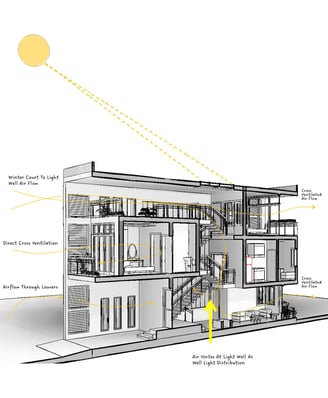
Image: Single Residence Project, Muhammad Golam Sami' 2018


In Bangladesh's situation, considering context and climatic factors has been a part of residential architecture from the ancient period. Even this context and climate play a significant role in architectural progression. The adaptation of local materials and microclimate, part of Vastu Swastra, mainly deals with the comfort factor. One of the oldest beliefs of the Indian subcontinent, Vastu, reflects traditional architecture. In today's contemporary residential development, context plays a significant role. Current practice inspires us to use human-centered architecture, Vastu's Belief, and guides design decisions to ensure human comfort in residential dwellings in micro-climates.
A variety of measures are taken to address microclimate and comfort in current multi-story residential practices. In this article, we will discuss how to adapt to climatic factors, address comfort, and create design variations through microclimatic elements in the case of compact residential design adopted in our architecture second-year residential project.
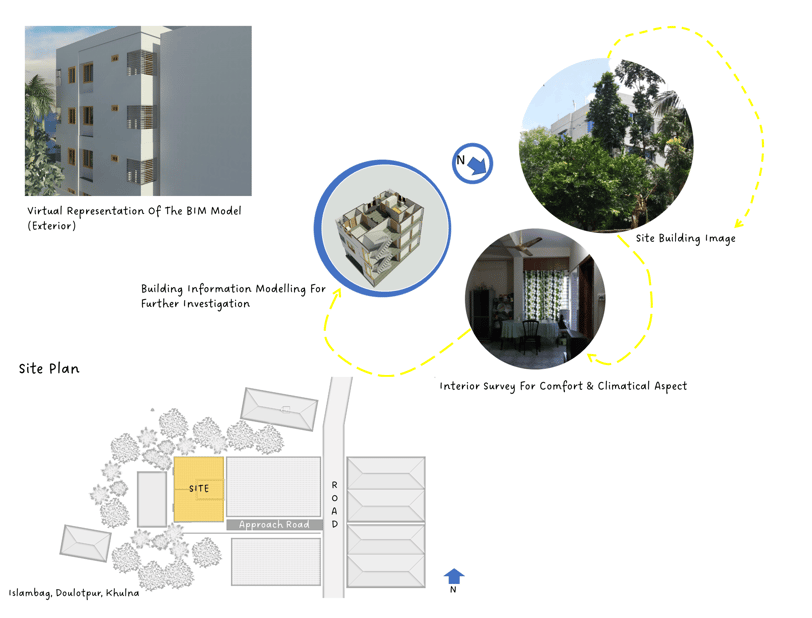

Figure 1: Research Site Attributes
Figure 2 depicts our surveyed floor plan as well as a sectional view of several functionalities. We discussed both the positive and negative elements. Southern exposure is advantageous because the majority of wind movement travels in this direction. However, the absence of cross ventilation is a significant issue because it cannot fully exploit this wind flow without cross ventilation.
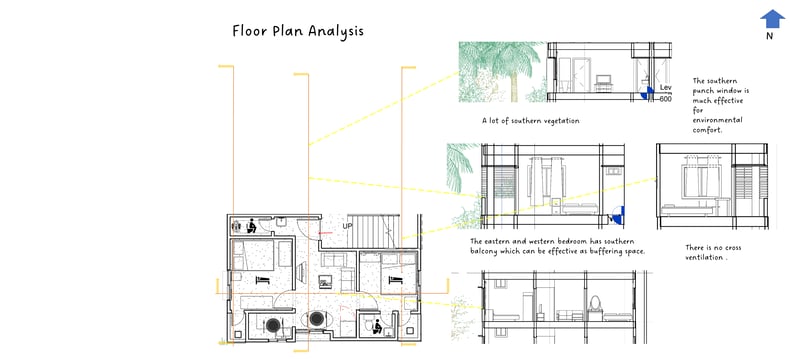

Figure 2: Floor Plan Analysis
Material data, as well as window opening and ventilation data, are required for a perfect BIM of a building. We gathered and entered them. These figures are shown in Figure 3. Inputting the precise values of these data is crucial for accurate computational simulations. To input various qualities of such materials, such as heat lag, reflectivity, NRC value, acoustic value, glazing, and so on, diverse literature, product descriptions, and, in some instances, standard values have been employed.
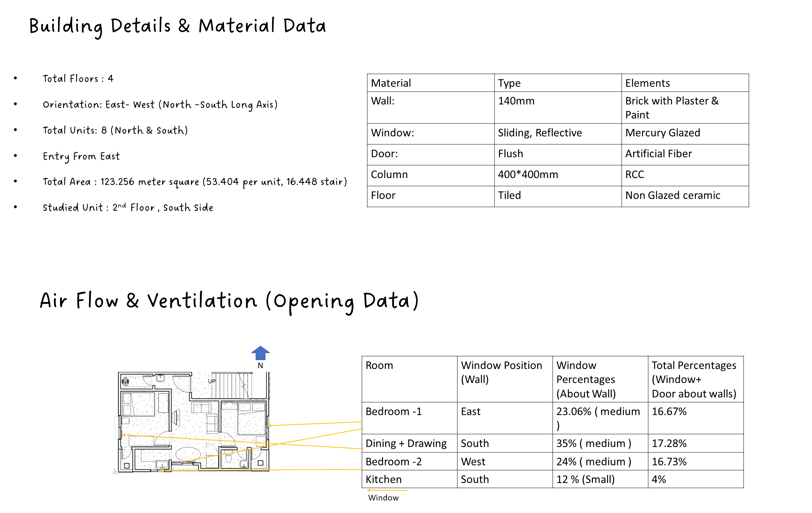

Figure 3: Building Details & Material Data
Shade devices and buffer zones, such as balconies, must be built to avoid direct insolation, heat gain, precipitation, and rain penetration [Figure 4]. We calculated the west facade shading device using the Sun Angle. We chose 8 May as the date based on 75 percent exposure to the maximum solar angle. In this situation, 1.52 m of shading is necessary on the west side, with just 125 mm of shadowing. We calculated the rain angle using a different method to determine the optimal depth of buffers and balconies. In that case a minimum depth of 814 mm is required; in that case, a balcony of 814 mm + 450 mm or 1264 mm depth is required for safety.
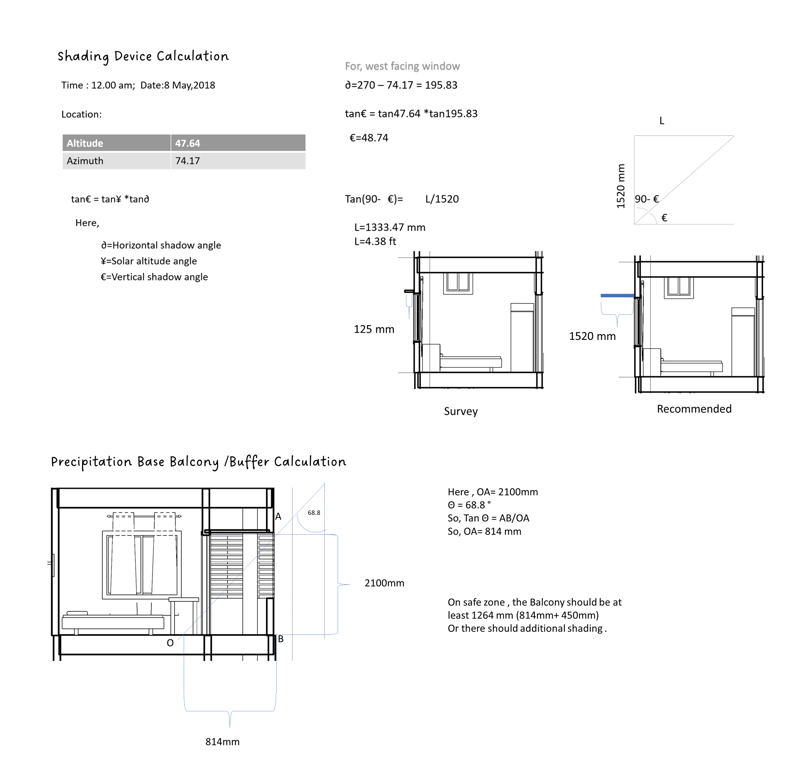

Figure 4: Shading & Buffer Calculation
We gathered one year's worth of wind data from the literature for this area and used it to create a wind rose diagram. This Windrose diagram is critical for aerodynamic simulation since it accurately forecasts air velocity, pressure rate, air vortex, and ventilated air volume. Figure 4 depicts the plotted wind rise diagram and wind flow simulation of the building's southern face (as an example).
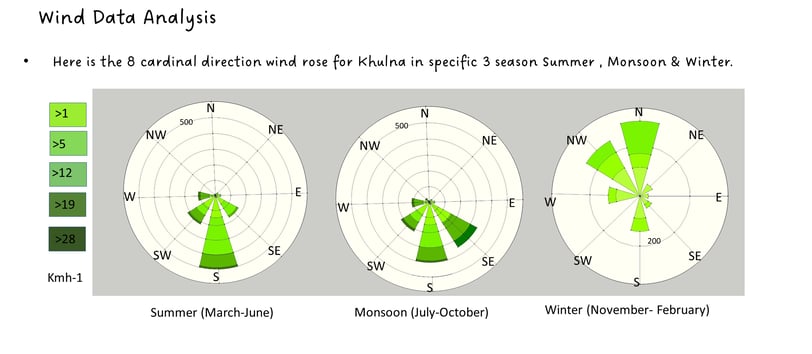

Figure 5: Wind Data Analysis
The Building Information Model was then subjected to daylight, radiation, and insolation examination using Autodesk Ecotect Analysis. To import BIM into Ecotect, first convert the building information model to XML, then import the data from the room space and energy models. We transform the output XML data to UTF8 because it utilizes the Unicode encoding UTF16. We used a Khulna weather file that we translated from EPW to WEA format for simulation. Following that, we started the simulation, which displayed daylight analysis, radiation analysis, and internal and external radiation on the plan-imposed analysis grid. We have selected a 600mm level for the grid, and from the analysis grid, it can be seen that the light penetration is only from the west and south side windows. To close the doors of the balconies, the light penetration on the south side is very low.
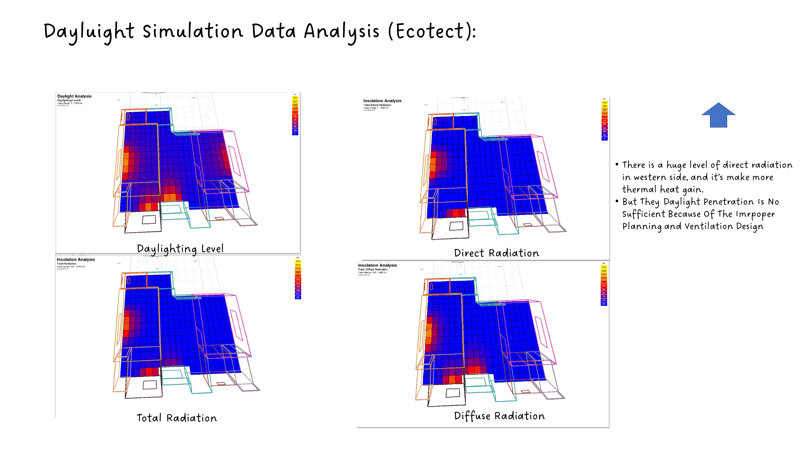

Figure 6: Daylight Simulation Data Analysis
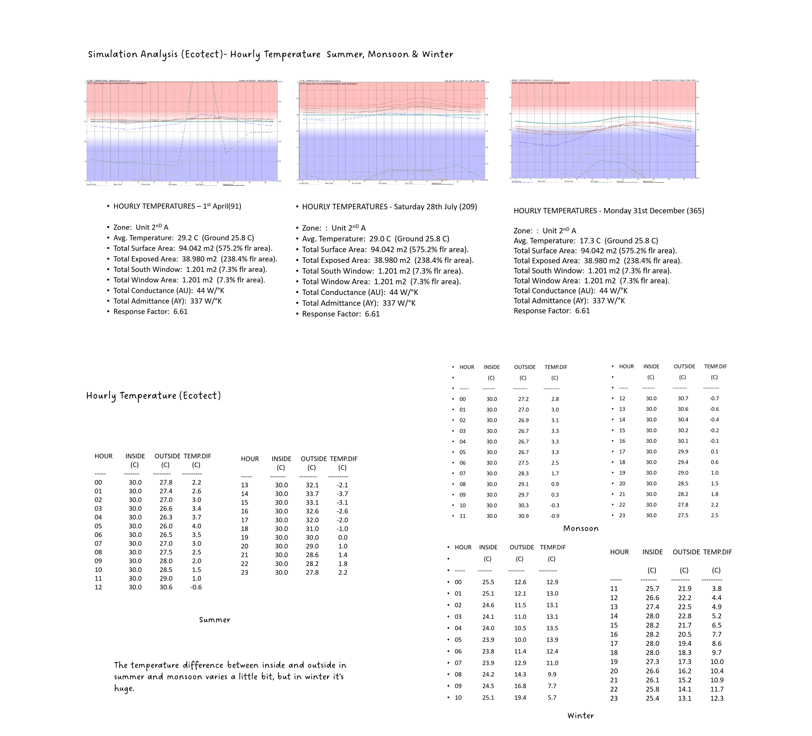

Figure 7 : Hourly sun exposure as well as how solar exposure is transformed into heat and captured inside. Interior comfort cannot be guaranteed in such circumstances.

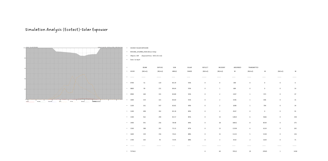
Through Ecotect's simulation, we compared the outdoor and indoor sections of hourly temperature for the summer, monsoon, and winter seasons [figure-6]. In the summer and monsoon seasons, we display the difference between interior and outdoor temperatures by calculating a set indoor temperature. In the case of these two seasons, we find that the inside temperature is usually higher than the outdoor temperature due to a lack of cross ventilation and a low heat lag. Heat penetration occurs from the west-facing wall, and heat is captured, resulting in the greenhouse effect. As a result, the inside temperature is difficult to lower. Because of seam heat capture in the winter, indoor temperatures are substantially greater than exterior temperatures. This analysis will provide recommendations for reducing indoor heat gain.
We conducted a questionnaire survey and collected occupant replies seasonally. We evaluated the comfort variables in this scenario using three functional zones. In this sense, each zone faces unique challenges, most related to the residential plan.
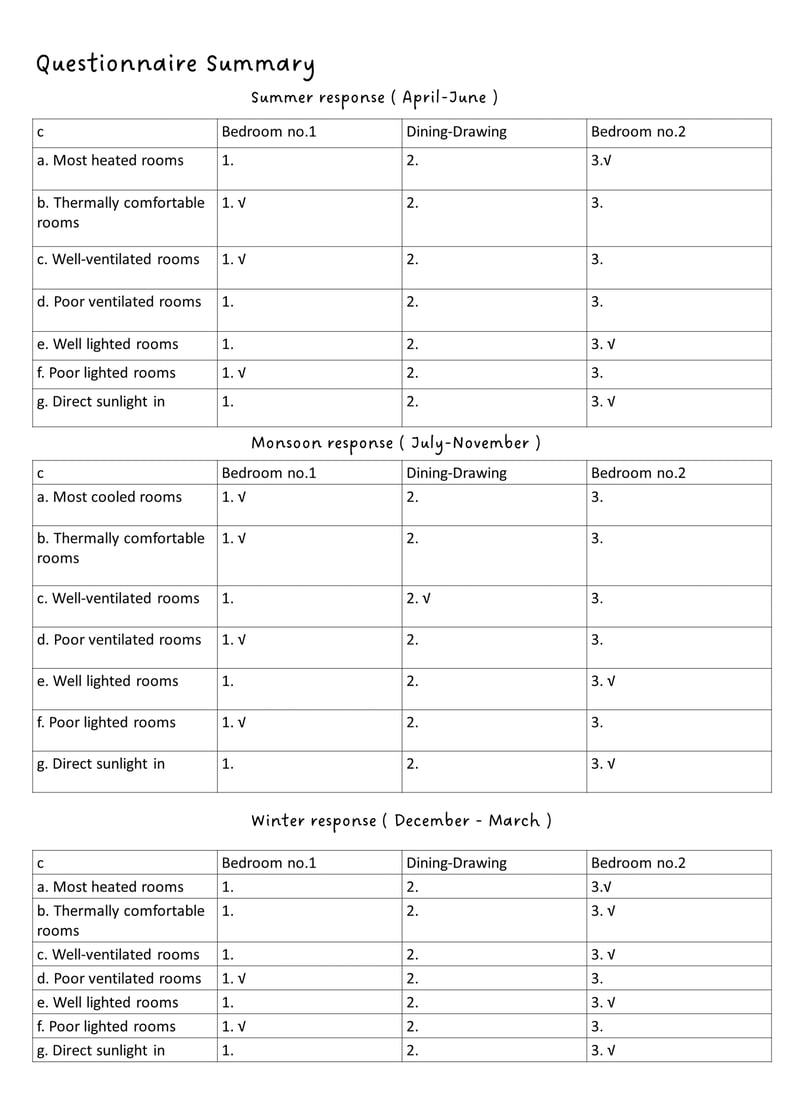

Finally, we constructed Mahoney's table, which includes temperature, relative humidity, rain, and wind charts in Table 1 and comfort level humidity indicators and indicators in Table 2. Finally, the Indicator Total and Predictive Layout are displayed in Table 3.
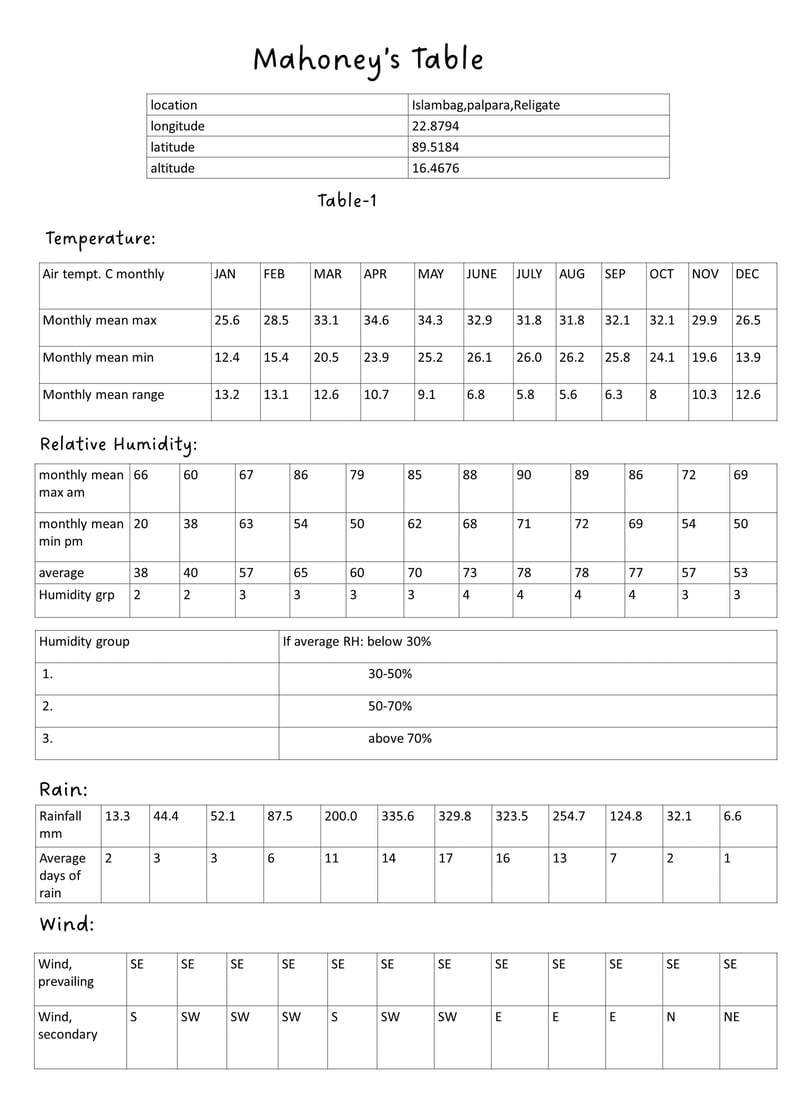

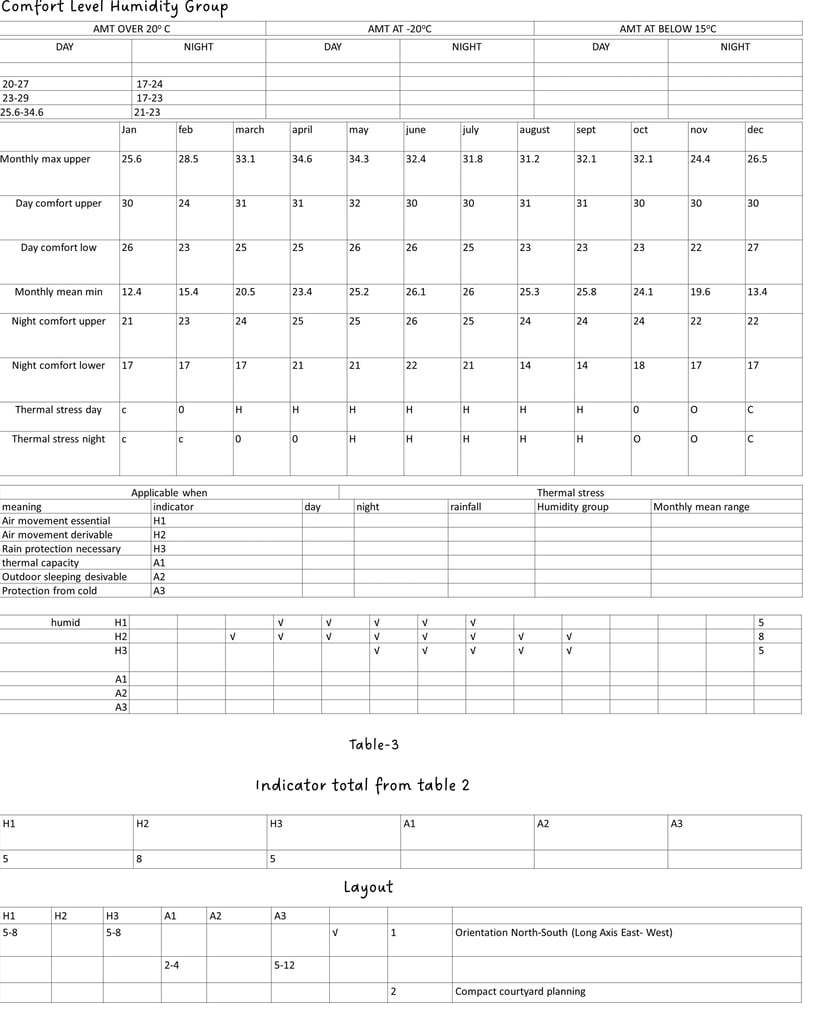

In Design Variation, Creating More Compact Site-Based Micro-Climatic Comfort:
We will increase the site's compactness and narrow it during this step. As a result, we can address the most challenging difficulties for microclimatic comfort implements. We chose a location with a 1:3 aspect ratio, with the long axis running North-South. There is also a five-foot setback on each side. So, we have solar exposure on the upper west side, which makes for a problematic solution. In the case of summer wind and north wind, a tunneling effect is formed, which is also challenging to employ successfully. The south side must be used properly because it is narrow and the sole face for air penetration. Because surrounding buildings restrict sunlight, an effective light well creation can remedy this problem. In this situation, it can be shown that mid-core light wells may distribute daylight most effectively. The latter has established a southern buffer zone, allowing for southern air penetration and enjoyment. This buffer is also linked to the light well, resulting in the winter court. Balconies have also been built on the northern face to provide protection from northern storms and breathing room. In terms of functional distribution, bedroom two ensures the penetration of south air. And blocked spaces (although internal cross ventilation is presented) used for service and dining spaces are designed in the north-west (south air flow exists). A louver is employed on the west side of the light well to allow southerly airflow from the set back to enter the light well and flow to the living and dining areas.

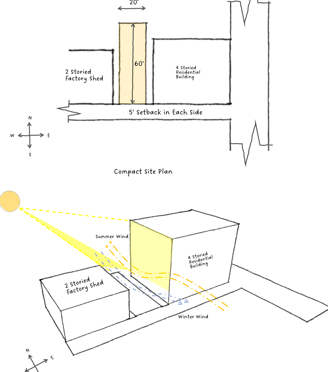

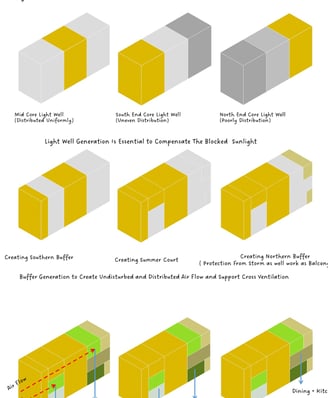


Figure 8 Conceptual Development for a Compact Dwelling Design
Survey Acknowledgements: Afiya Ahmed Nazia, Syeda Nurun Nahar Zahra, Md. Mueid , Nahin Uddin Mollick
Supervisors: Professor Dr. Bayezid Ismail Chowdhury, Md. Raihan Khan, Humayra Alam, Noshin Siara Promy
Special Thanks To Mushfiqur Rahman Arzu, Sabina Naznin
References:
1. Fazeli, H., & Goodarzi, A.M. (2010). The Principles Of Vastu As A Traditional Architectural Belief System From An Environmental Perspective. International Workshop on Applied Reconfigurable Computing.

Meet The Authors



Mahmuda Yasmin Dola
B. Arch, Khulna University of Engineering & Technology, Khulna, Bangladesh Architect | Analytical Practitioner
Head of Construction, ADORA Studios, Bangladesh
CMO & Head of Construction, SS Construction & Power Solution, Bangladesh


Muhammad Golam Sami
B. Arch, Khulna University of Engineering & Technology, Khulna, Bangladesh Architect | Futurist | Sustainable Design Expert
Operational Head, ADORA Studios, Bangladesh
Founder, samism.org
Lecturer, Department of Architecture
Northern University of Business & Technology

Related Articles



